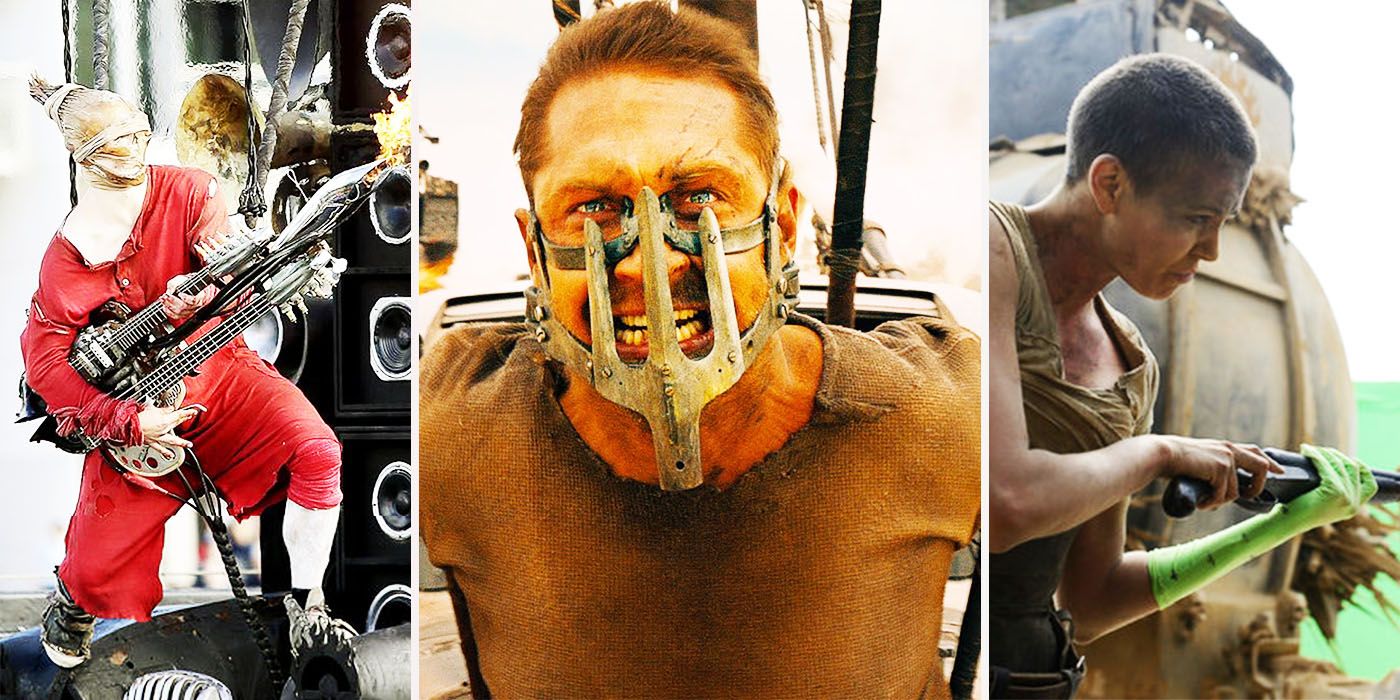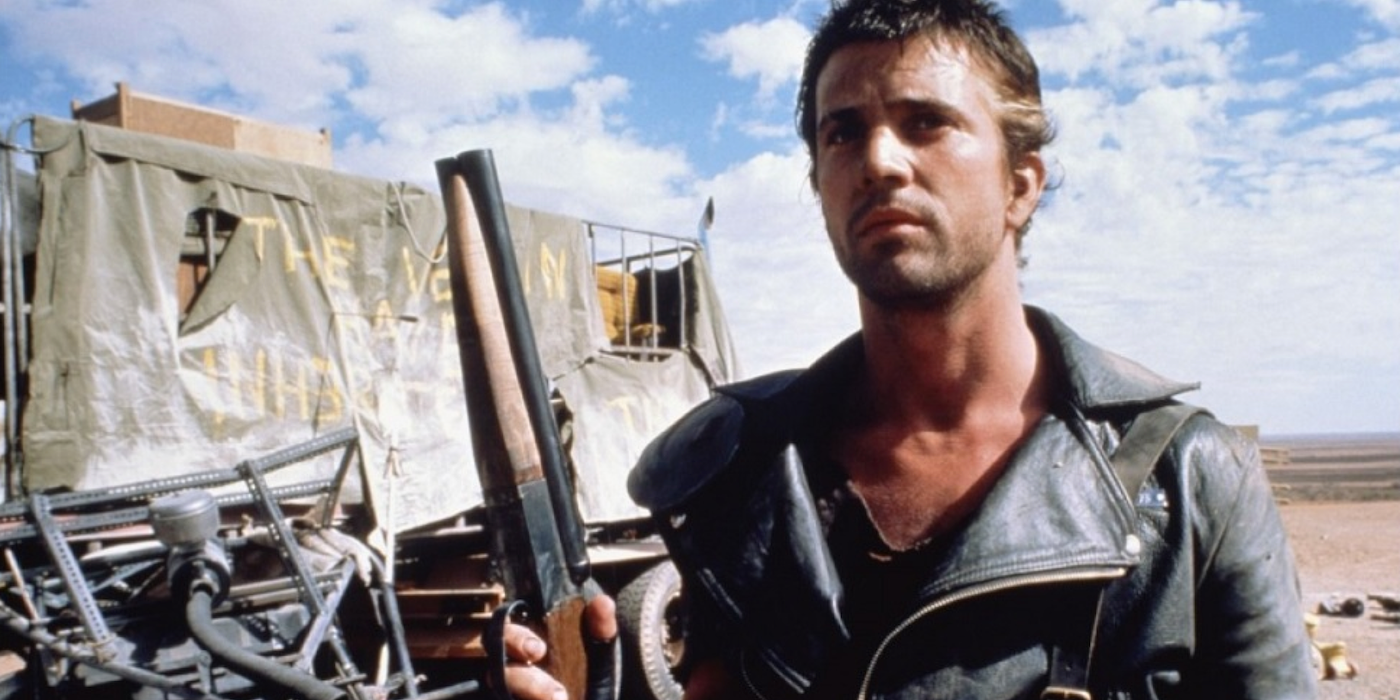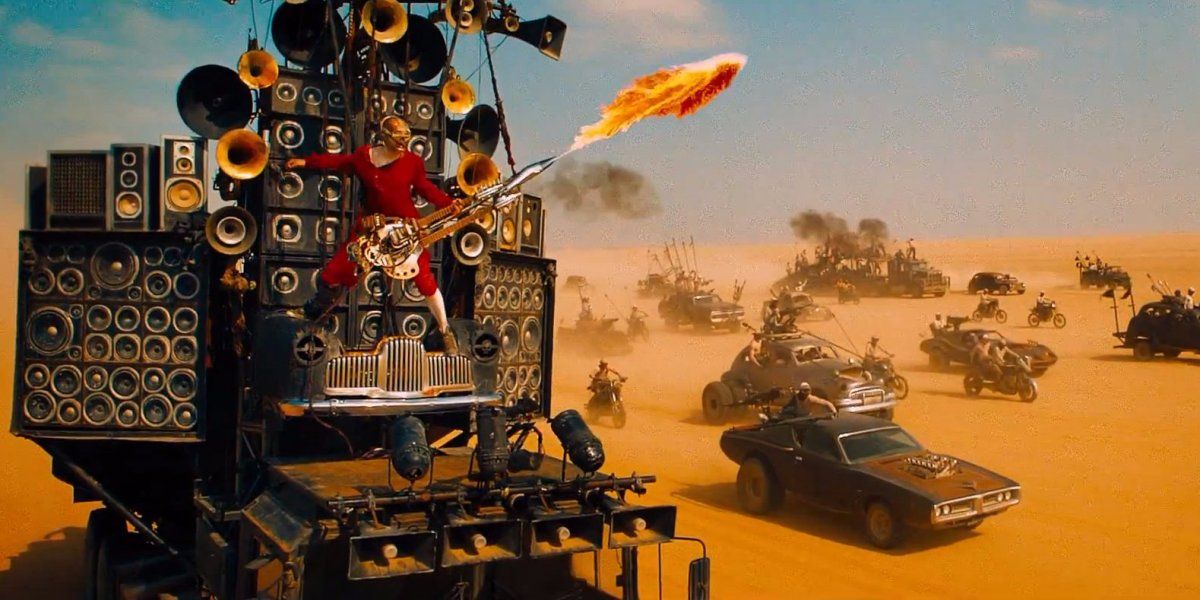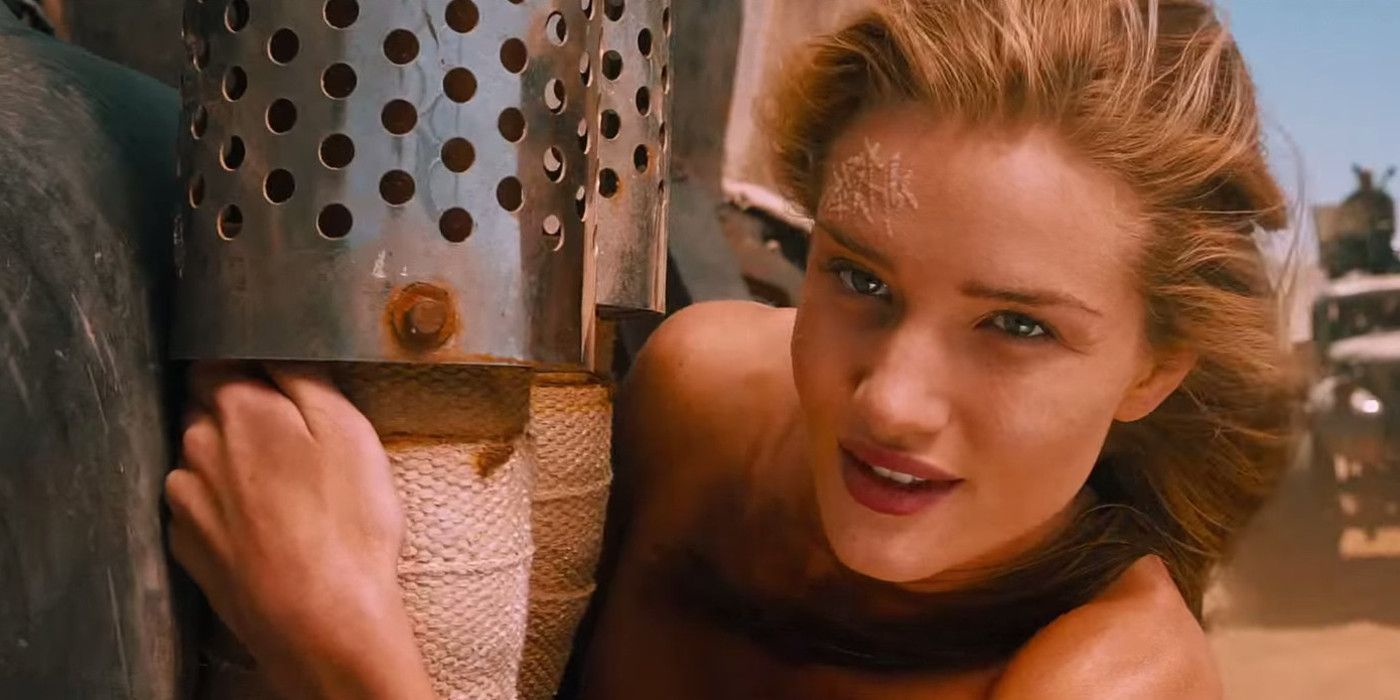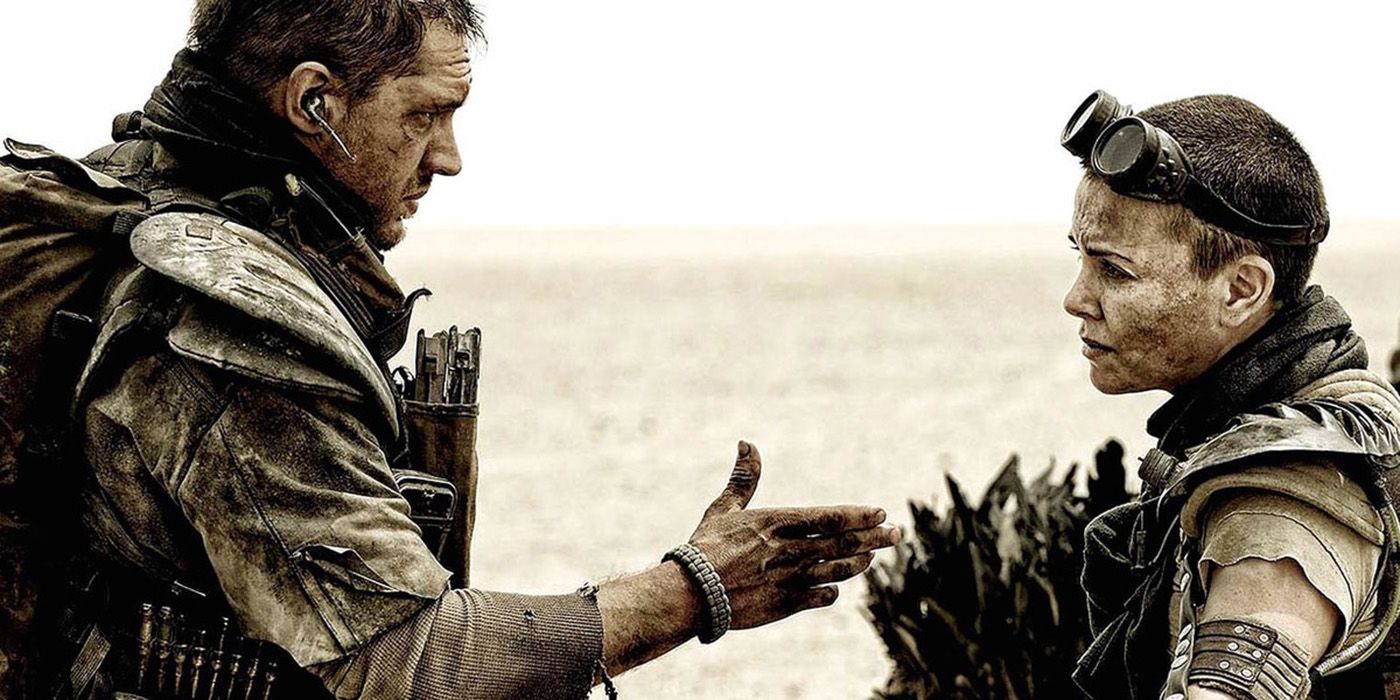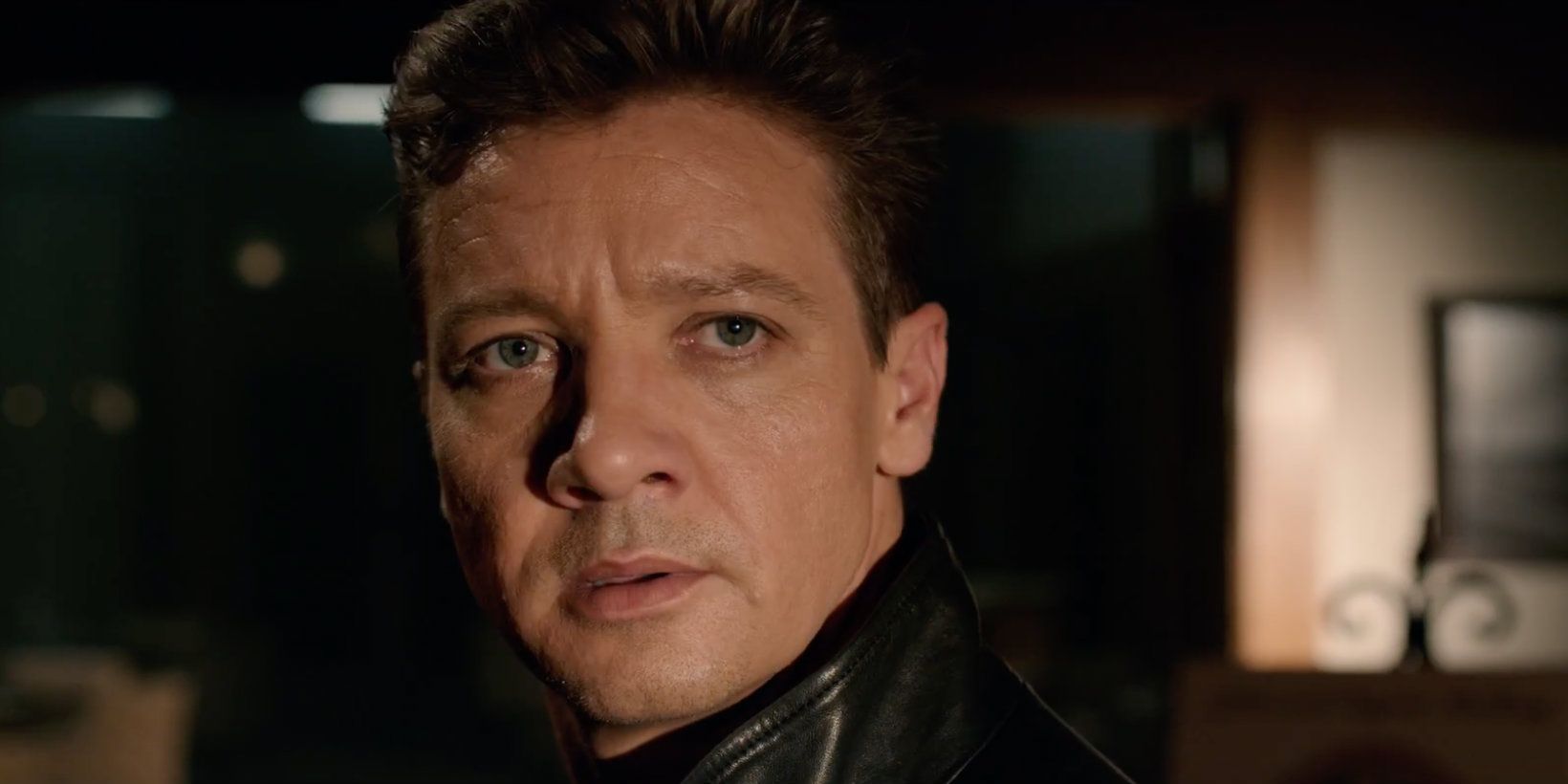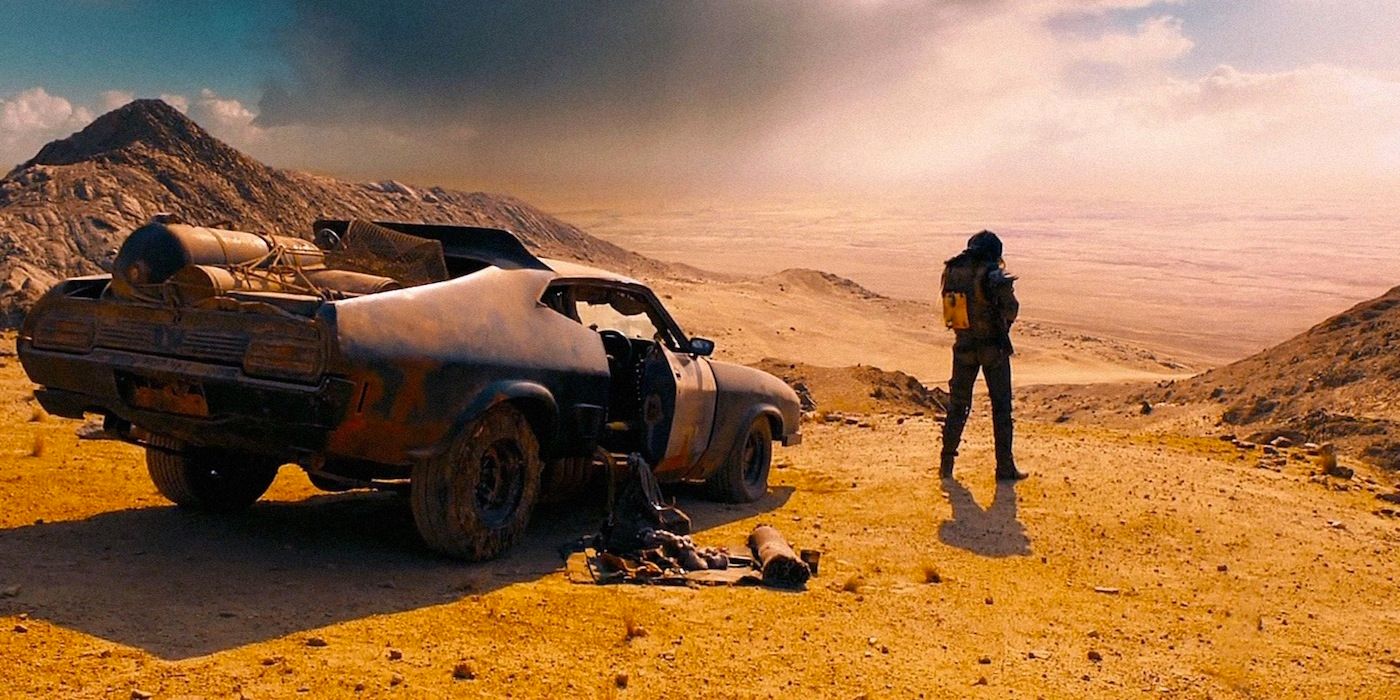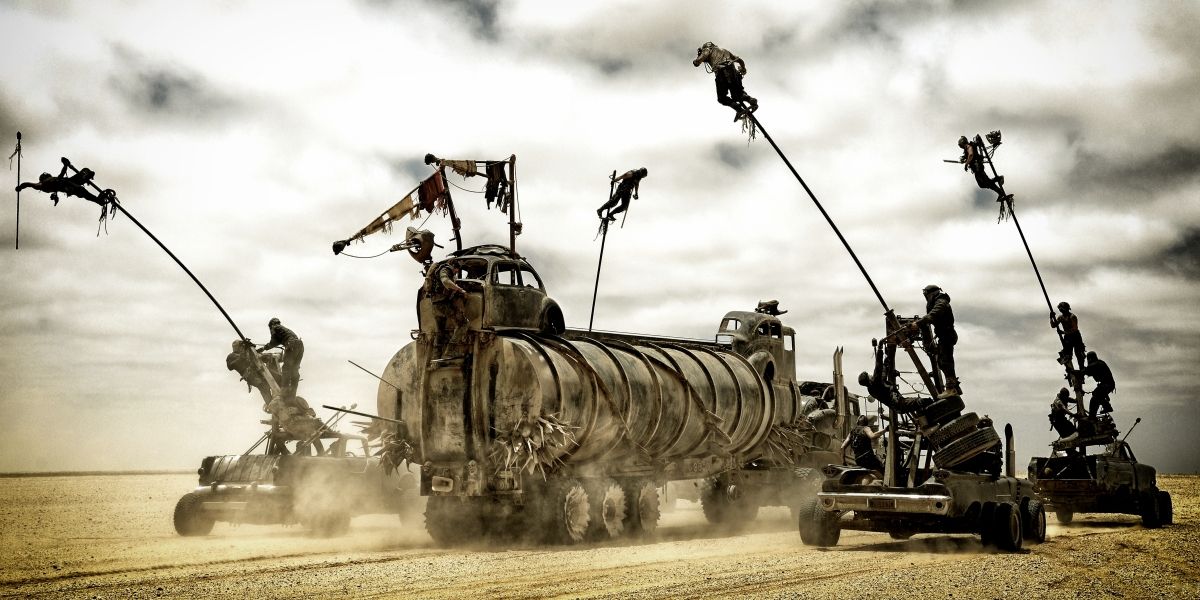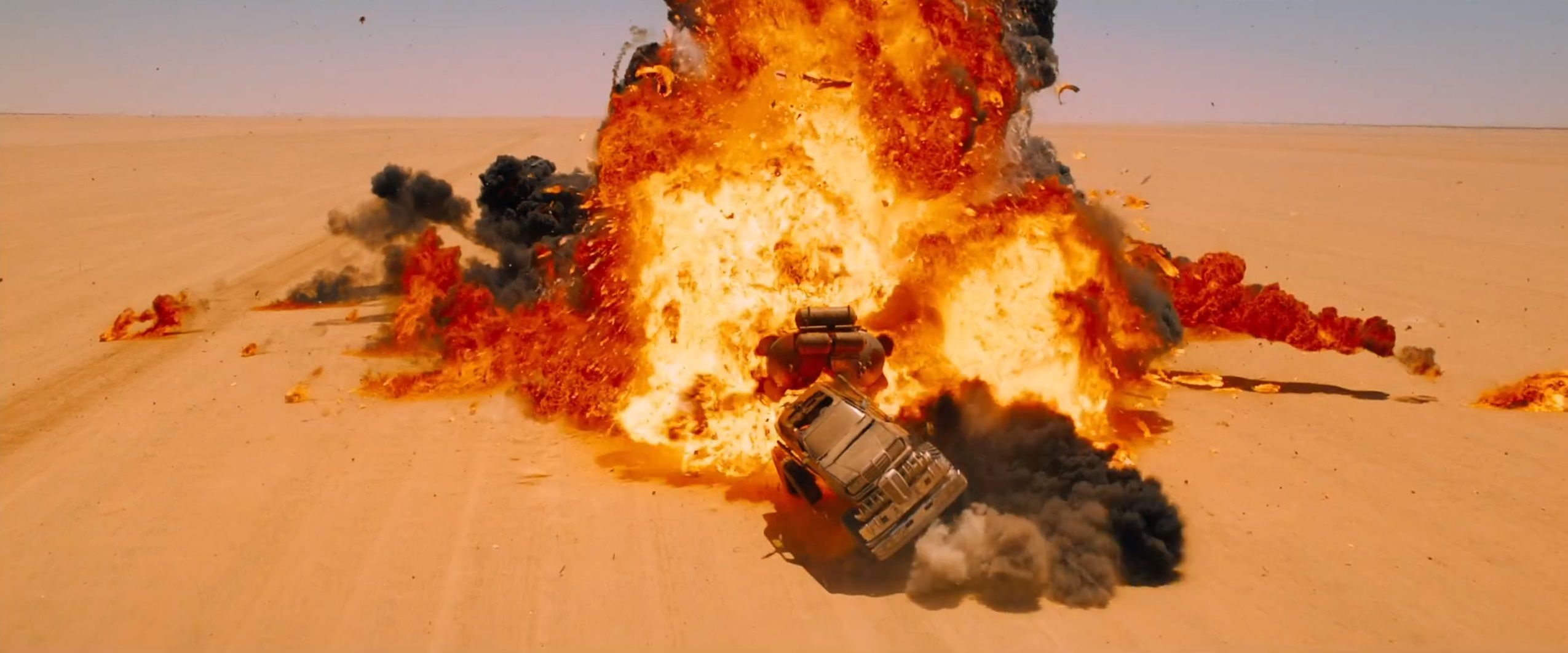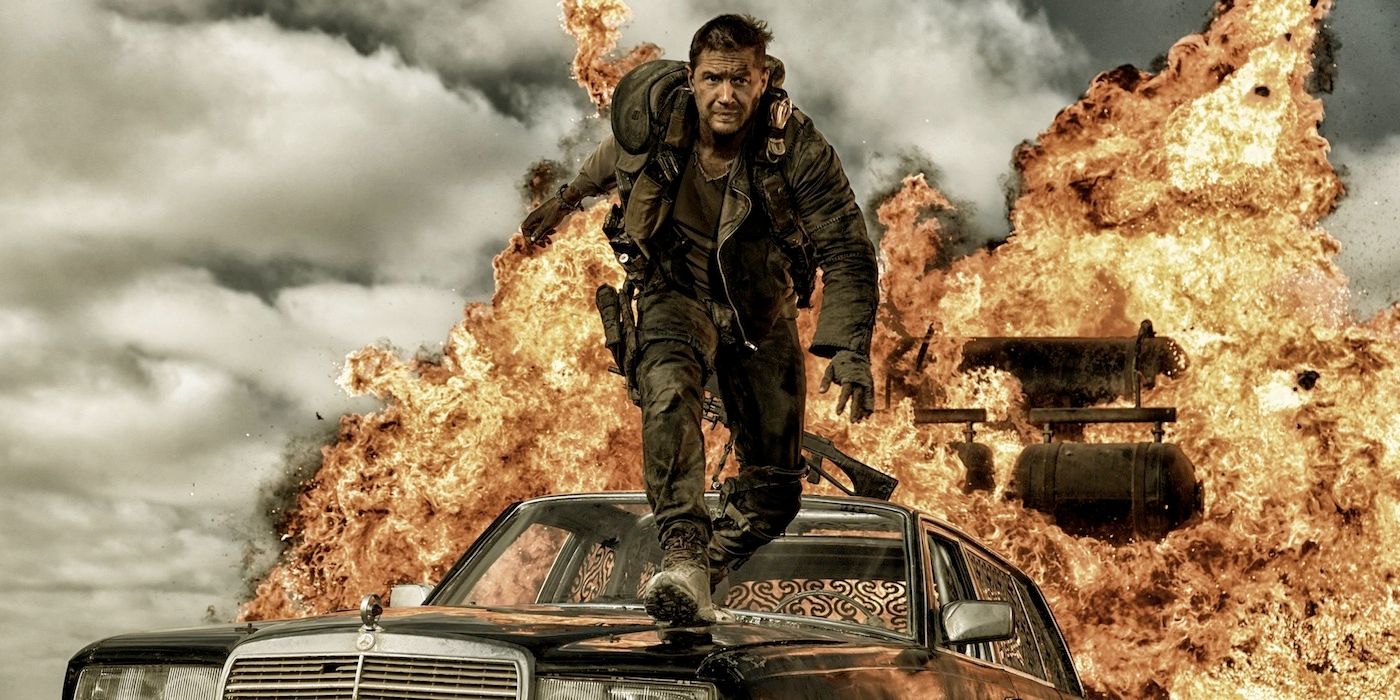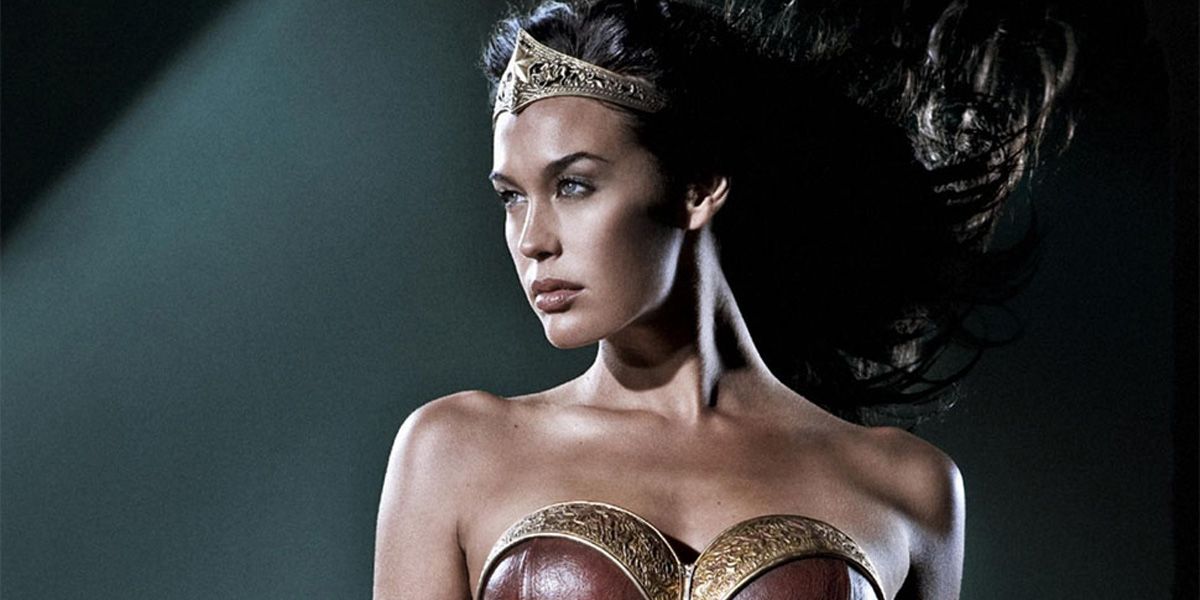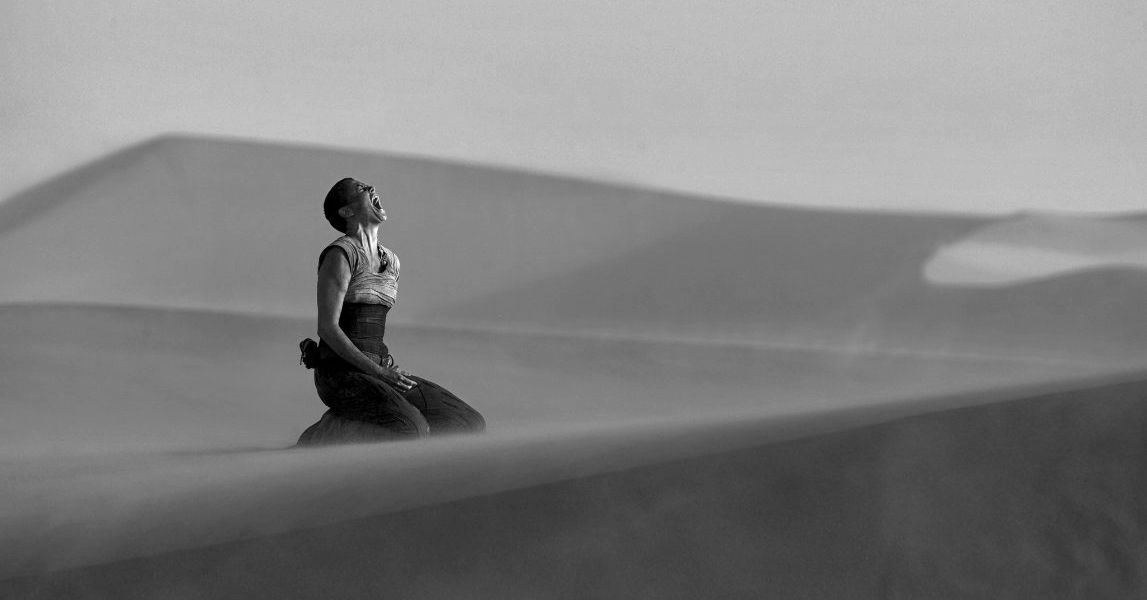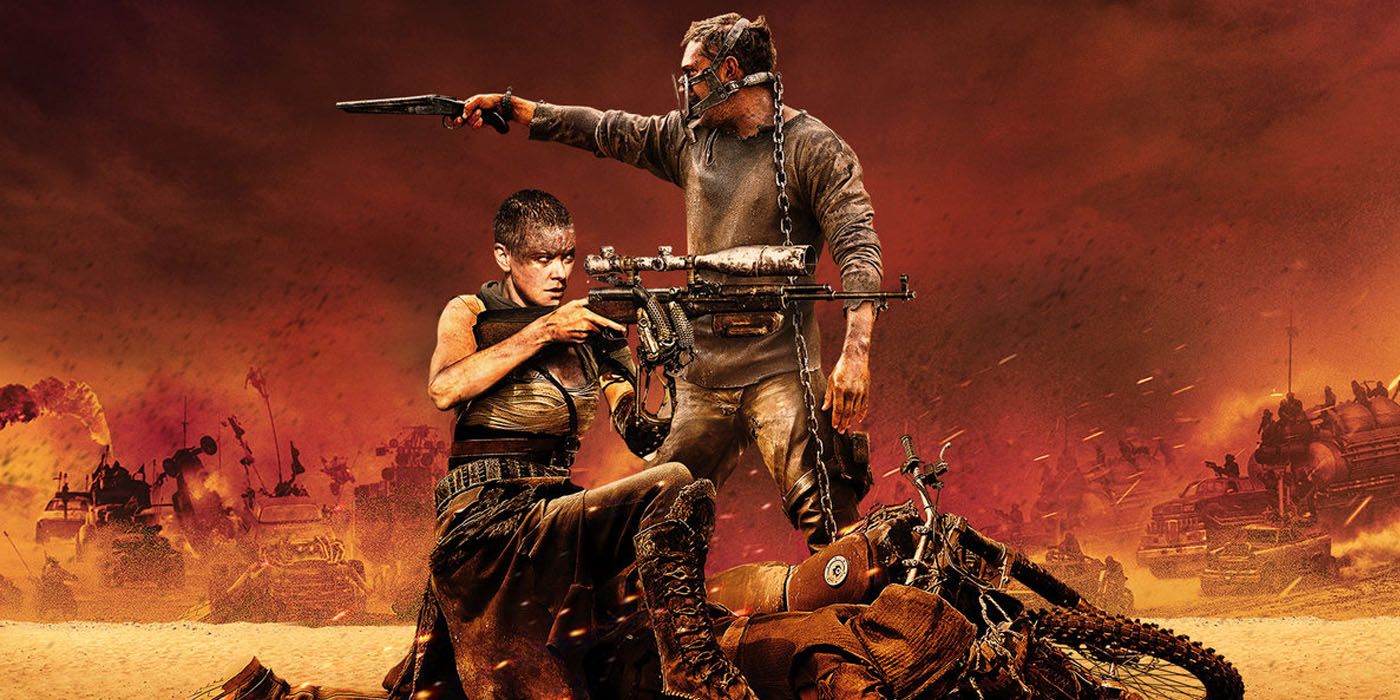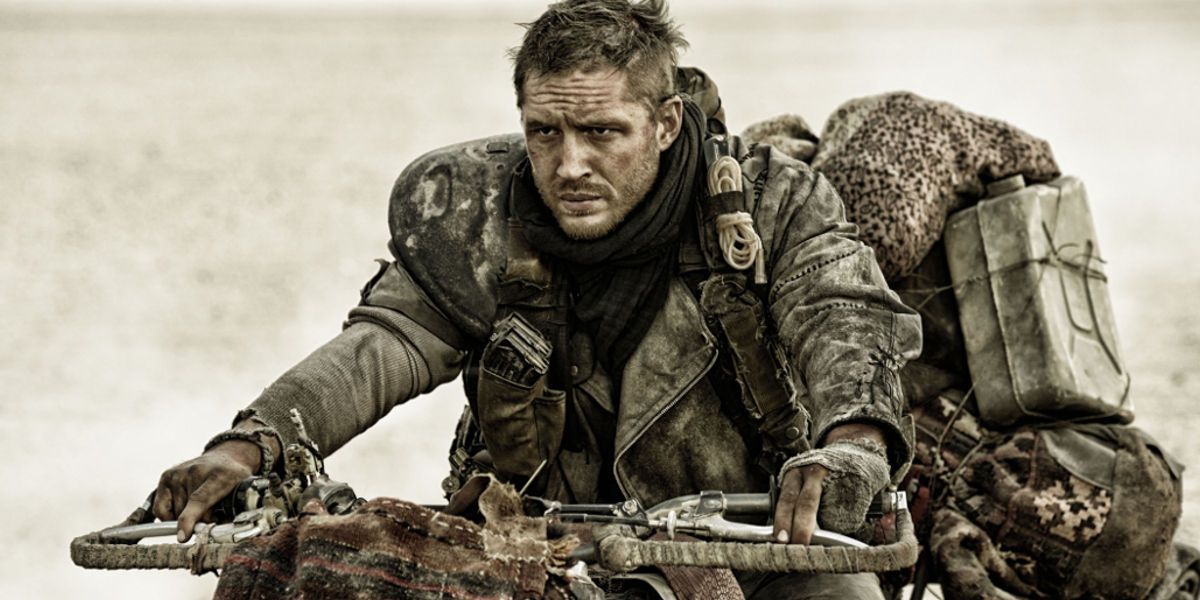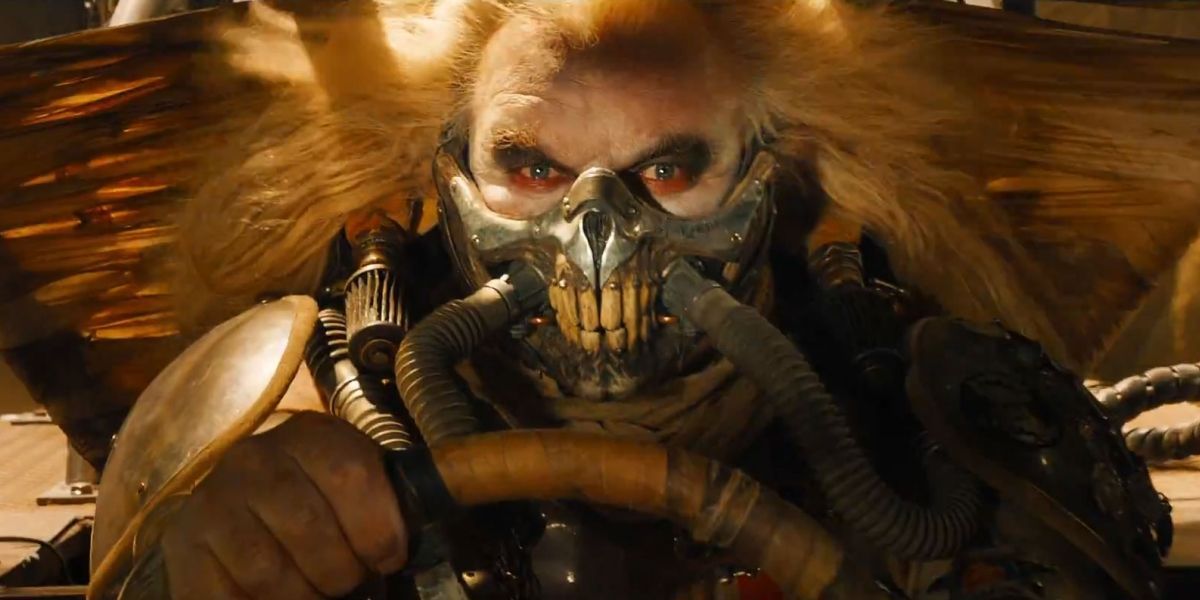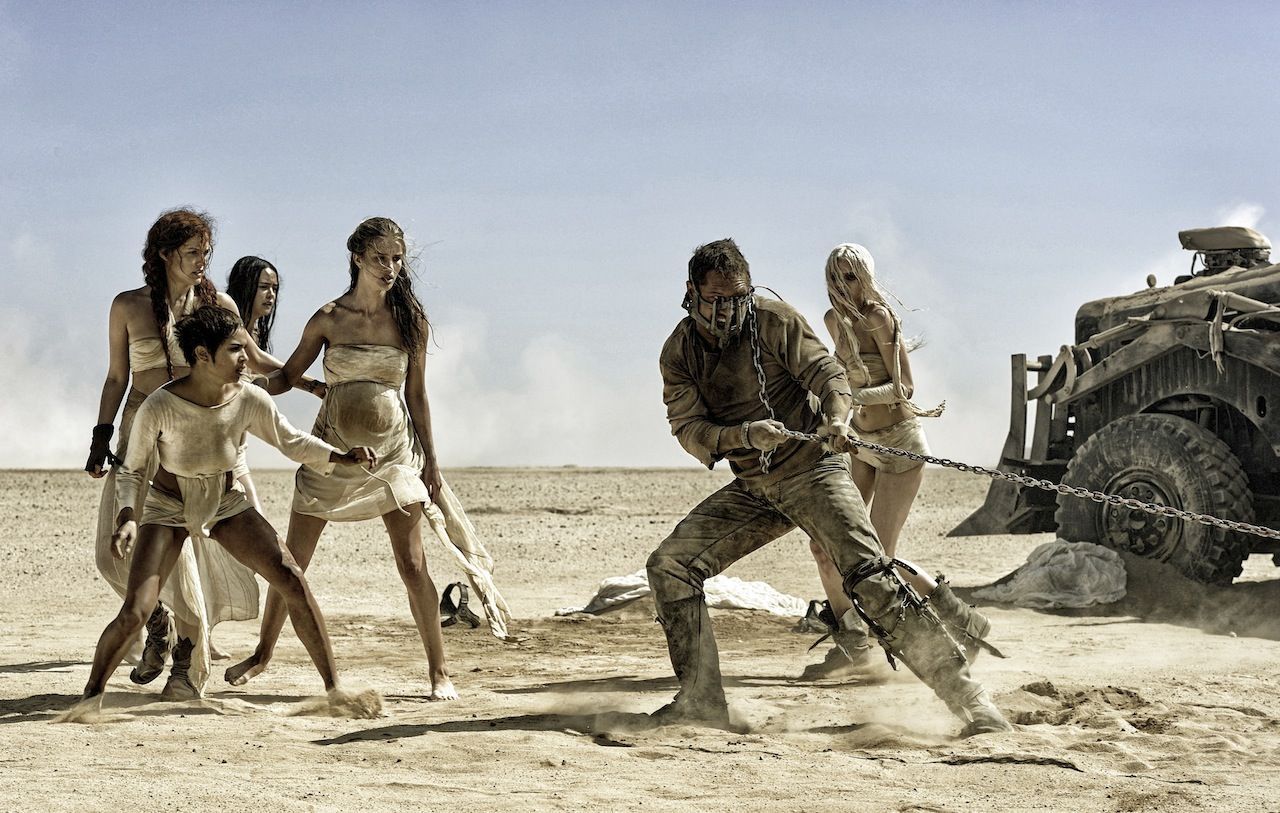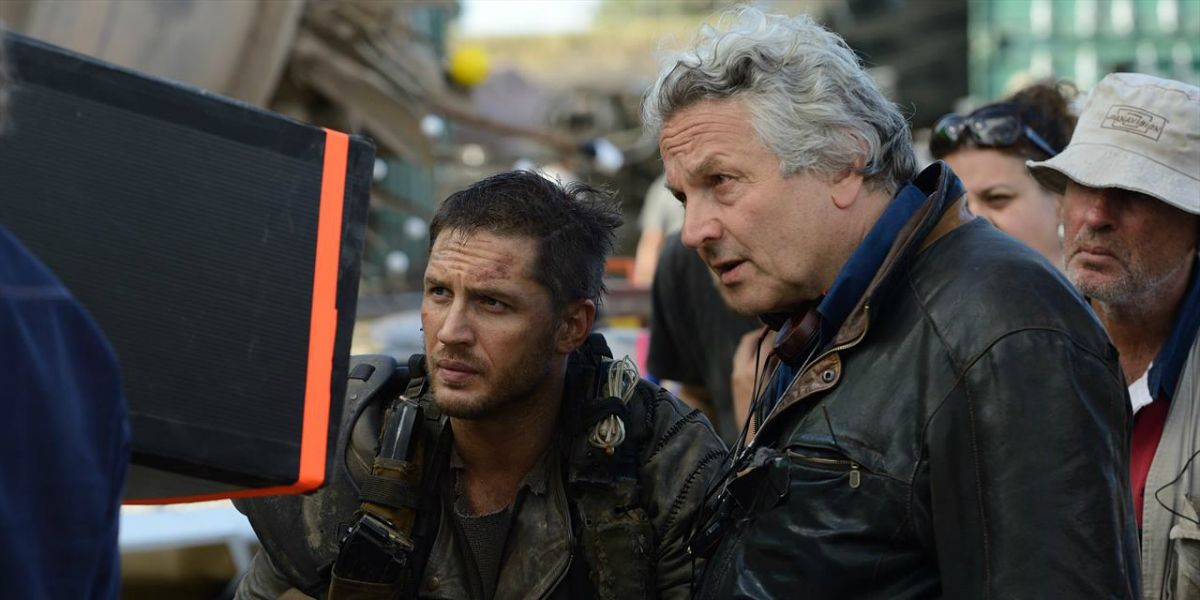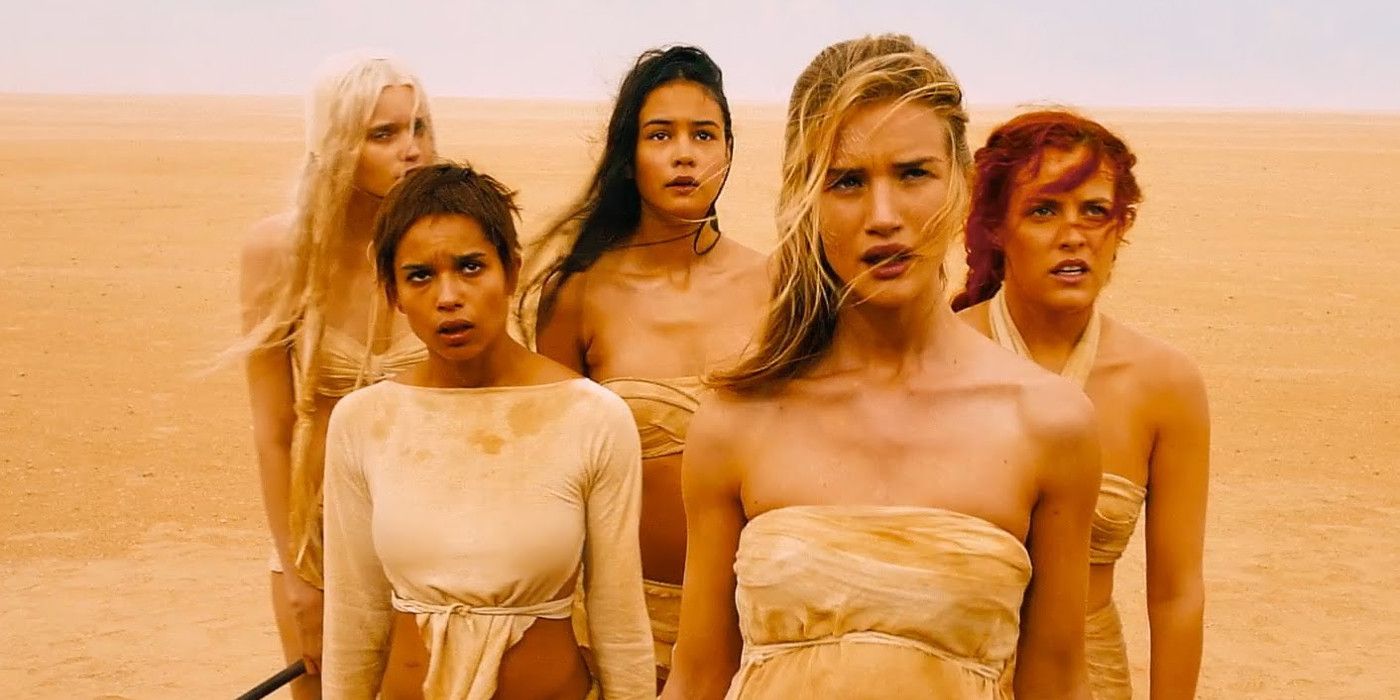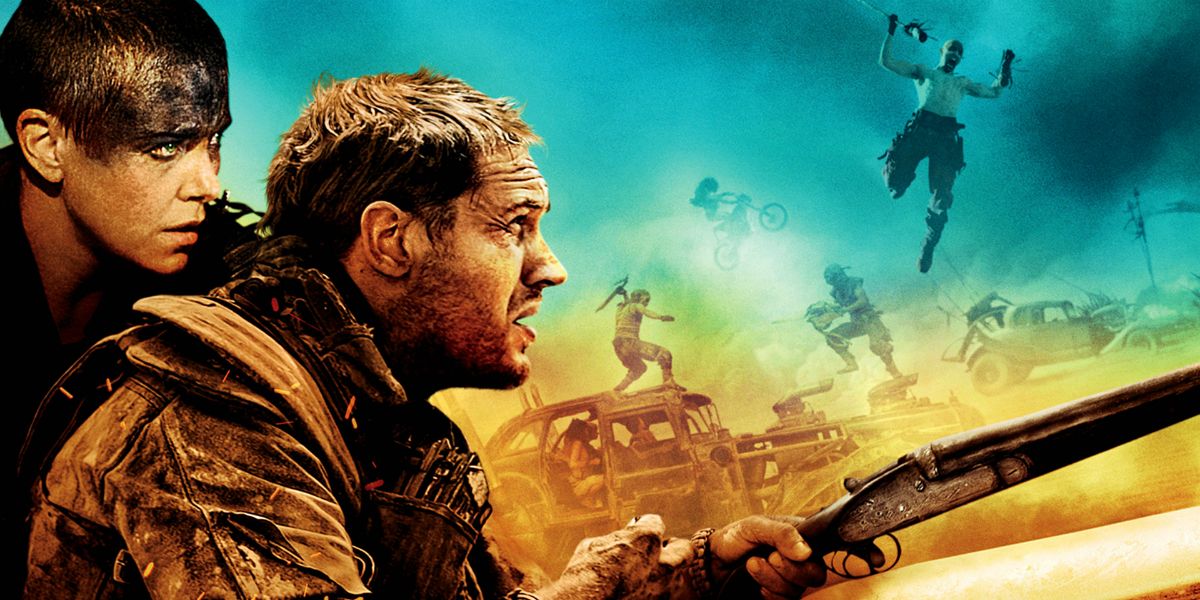Mad Max: Fury Road announced itself as a groundbreaking piece of action cinema when it was released on May 15, 2015. The movie was a wall-to-wall chase, filled with inventively staged stunts that blew audiences' minds. Moreover, it managed to be endlessly thrilling while still delivering three-dimensional characters and a plot with feminist overtones and a surprising amount of depth. Tom Hardy played the titular character, but Charlize Theron stole the show as the tough-as-nails Imperator Furiosa.
The sky was the limit. Fury Road was a box office hit, pulling in $154 million in North America and an additional $224 million worldwide. Critics scoured their thesauruses looking for new words they could use to praise it, resulting in a Rotten Tomatoes score of 97%. So skillful and innovative was the film that even awards voters took notice. Against all odds, it was nominated for Best Picture at the Academy Awards.
If you think the events that take place onscreen are insane, wait until you hear about the things that took place behind the scenes. What follows is a comprehensive look at the struggles of bringing Mad Max: Fury Road to theaters. Once you know how hard it was to get this movie made, we think you'll appreciate it even more.
Here are 19 Crazy Secrets Behind The Making Of Mad Max: Fury Road.
Mel Gibson's personal problems cost him his role
Prior to Fury Road, the last Mad Max movie was Mad Max Beyond Thunderdome, all the way back in 1985. George Miller actually tried to deliver a fourth installment sooner than 2015. Miller had set it up with 20th Century Fox and was set to shoot in 2002.
The director told the New York Post that, after 9/11, "the American dollar collapsed against the Australian dollar, and our budget ballooned.” That caused the planned sequel to fall apart.
Picking up the project later proved impossible -- at least with the original Mad Max himself. Mel Gibson's personal problems, including a driving arrest and some truly startling racist rants that went public, turned him into a Hollywood pariah that no studio wanted to cast.
Gibson's age was an additional factor, as Miller wanted a "contemporary" Max, not one that was older.
Its delay led to dancing penguins
When insurmountable problems beset his 2002 attempt to deliver a fourth Mad Max movie, George Miller wasn't sure what he was going to do. He'd spent so much time on the project, only to see it collapse.
The director had previously assembled a digital unit to begin prepping another picture he wanted to make -- an animated feature involving penguins who sing beloved pop songs and engage in intricate dance routines. They suddenly announced that they were ready to go, so Warner Bros. gave the green light to the eventual box office hit known as Happy Feet. Miller spent the next three-and-a-half years working on it instead.
This was not his first foray into family-friendly filmmaking. He wrote and produced the Oscar-nominated 1995 pig comedy Babe, and directed its 1998 sequel, Babe: Pig in the City.
The Doof Warrior's flaming guitar
Without a doubt, the character who earns the greatest amount of audience curiosity in Fury Road is the Doof Warrior. He's the guy in the red long-johns playing electric guitar atop a massive war machine, backed by a wall of speakers. The role is played by Sean Hape, who goes professionally the name iOTA.
His experience was quite unusual. For starters, the guitar he played was, according to George Miller, made of bedpans to give it the requisite appearance of having been fashioned out of old junk in the post-apocalyptic world.
Standing on a moving vehicle and pretending to play guitar doesn't seem like it would be that big a challenge, yet it was. For obvious safety reasons, Hape was attached to the truck via bungee cords. The guitar was similarly connected so the actor could hold it, given that the faux instrument weighed a whopping 132 pounds.
Rosie Huntington-Whiteley's accident
With all of the insane stunts and action sequences in Mad Max: Fury Road, it's somewhat amusing that one of the actors had an accident not on set, but in the makeup chair. That's precisely what happened to Rosie Huntington-Whiteley, who plays The Splendid Angharad, Immoran Joe's pregnant wife.
As is sometimes necessary when making a film, a plaster cast of the actress's head needed to be made. The process involved covering her entire face with special plaster, waiting for it to dry, and then carefully peeling it off. Huntington-Whiteley told a British morning show that the plaster got into her eyelashes during the process, causing them to be pulled out when the cast was removed.
She understandably described the incident as "painful" and "quite traumatic." It took three whole months for them to grow back.
Charlize Theron vs Tom Hardy
Anyone who has ever had a job has, at one point or another, come into conflict with a coworker. It happens to huge stars on big-budget movies, too. Just ask Charlize Theron and Tom Hardy, who didn't exactly get along on the Fury Road set.
There are slightly different accounts of what happened, but the gist of it is that Hardy liked to stay in character in between shots. As such, he would mumble to himself, act surly, and remain isolated from the rest of the cast. Theron, who dropped character when the cameras stopped rolling, would attempt friendly interactions with her co-star, only to find him closed off and not receptive. That lack of camaraderie frustrated her.
The stars downplayed their conflict afterward. Hardy told Esquire that he thinks Theron is "incredible," while she expressed that their animosity may have actually helped the movie.
Heath Ledger and Jeremy Renner were almost Max
Obviously, a new Mad Max movie was a very big deal. Lots of Hollywood's brightest male stars were eager to step into Mel Gibson's shoes.
Miller initially approached Heath Ledger for the role of Max Rockatansky. His passing in 2008 prevented the world from seeing what his interpretation of the character would have been. Sam Worthington and Eric Bana were also contenders at various points.
Particularly hoping to step into the role was Jeremy Renner. In fact, the Avengers star wanted the part so desperately that he actively campaigned for it. During a 2009 interview with The Modesto Bee, he said, "I'm fighting to do the new Mad Max film with George Miller." Renner met with the director and even agreed to do screen-tests, which many stars of his caliber are reluctant to do.
As we all know, Renner didn't get the role, but Tom Hardy did.
Flooding in the desert postponed shooting by another year
After many years of delays and postponements, Mad Max: Fury Road was finally ready to start production when another snag hit. Filming was to take place in Broken Hill, a portion of the Australian Outback where the previous installments were shot. All advance preparations were made for the process, including building the roads on which chase scenes would take place. Then something happened that was unexpected.
The normally arid environment experienced its first rainfall in 15 years.
Flowers began to bloom, which was incongruous with the post-apocalyptic setting, and sections of the region flooded. There was simply no way the movie could achieve its desired look under these circumstances. Warner Bros. recommended that production pause until things went back to "normal."
Miller and crew waited eighteen whole months, and when it still wasn't sufficiently improved, a location in Africa was chosen instead.
90% of the stunts are real
Released in North America in 1982, The Road Warrior was a groundbreaking action picture. The way Miller moved the camera, practically making it a participant in the action, was revolutionary. It changed the way such sequences would be shot from that point on. For Fury Road, he wanted to give audiences something else they hadn't seen before. That involved using real stunts as often as possible. There's a whole lot of dangerous stuntwork in the film.
Manipulating it with CGI would have been very easy, but Miller knew that would lessen the effect.
He wanted the action scenes to adhere to the laws of physics, while making the audience feel the danger. That could only be accomplished via an ace stunt team risking life and limb.
They did such a good job that, by Miller's estimate, 90% of the stuntwork onscreen is real.
Environmental apocalypse
Fury Road was filmed in Namibia. The government was initially thrilled to have the production come, given that it would pump a lot of money into the local economy. Some of that cheer diminished once the cast and crew left town. Apparently, there was some ecological damage done during filming.
The Guardian revealed details of a leaked environmental report claiming that areas of land under protection were damaged, that rare caci and lizards were placed in danger, and that trucks drove over areas of the desert that had never been touched.
Worse, it asserted that the crew attempted to cover up the tracks left by vehicles to hide the damage they'd done.
Environmentalists jumped on these claims, which allegedly occurred because the production squeaked by before stricter regulations were enacted. The Namibian Film Commission took issue with the accusations, saying all requirements had been satisfied beforehand.
The studio sent a watchdog when it went over budget
With so many complex stunts and action sequences, it didn't take long for Fury Road to go over budget and fall behind schedule. It takes time and money to get those things just right. The audience won't care about that stuff if they're enjoying what they're watching onscreen. Studio executives, on the other hand, become very worried.
That being the case, Warner Bros. chief Jeff Robinov made the trek to Namibia to meet with Miller and assess the potential financial damage. Although he liked what he was seeing from an artistic standpoint, he felt there needed to be a little extra insurance that there would be no more delays or overages.
To that end, he sent Denise DeNovi -- a noted producer whose credits include Heathers and Batman Returns -- to supervise the production and report back to the studio.
One star was almost Wonder Woman
Everyone knows that Zack Snyder directed the Justice League movie and Joss Whedon directed the reshoots, but did you know that George Miller was going to make a JL film?
The director had a project set up called Justice League: Mortal, and he assembled an impressive cast. Armie Hammer was signed to play Batman, Adam Brody would be the Flash, and rapper Common would be Green Lantern. As for Wonder Woman? She was supposed to be played by model Megan Gale.
Regrettably, the project was doomed. A writer's strike and some issues with an Australian tax rebate conspired to get it shut down. That said, Miller remained fond of Gale's talent. When he needed someone to portray The Valkyrie -- an influential member of the female clan known as the Vuvalini -- he knew the actress would be the perfect fit and promptly cast her.
Miller wanted to make it in black and white
For a movie that's so visually striking in its use of specific colors, it's strange to think that George Miller didn't want Mad Max: Fury Road to be in color at all. He wanted it to be black and white.
The idea went all the way back to The Road Warrior, when he watched the orchestra recording the score to a black-and-white print of the film. He told The Independent that he thought it made the images look more "iconic" and "abstract," giving the whole movie added power. In the end, the studio wasn't willing to gamble Fury Road's massive budget on a format they knew would turn some viewers off.
Miller still kind of won, though. A "Black & Chrome" edition of the movie received a brief theatrical release and is available on Blu-ray.
A legendary cinematographer came out of retirement to shoot it
Dean Semler is a noted cinematographer whose credits include Dances With Wolves, for which he won the Academy Award. He also shot two previous Max Max installments, The Road Warrior and Mad Max Beyond Thunderdome. Semler was lined up to shoot Fury Road, too, only to drop out at the last minute for personal reasons.
It was a troubling loss, yet also one that led to some genuine good fortune.
Knowing that he needed someone with immense skill, Miller turned to his old pal John Seale, with whom he'd worked on the 1992 drama Lorenzo's Oil. He also had an Oscar, for The English Patient. Seale was, by this time, officially retired. However, he was intrigued by the scope of what Miller had in mind for Fury Road and agreed to come out of retirement to shoot it.
The result was another Oscar nomination.
Editing 400 hour of raw footage into an Oscar
After Miller was done shooting all of his incredible action scenes and the actors had finished giving their performances, it was time to turn Mad Max: Fury Road over to an editor. The director didn't have to look far. He hired his wife, Margaret Sixel, who had edited Happy Fee as well as several documentary films. The task he charged her with pretty much ensured that they wouldn't have a ton of time to spend together.
Miller shot a lot for Fury Road, more than most filmmakers do. Sixel's challenge was to take over 400 hours of raw footage and whittle it down to a two-hour movie. Watching and cataloging all that footage took three months.
According to the Sydney Morning Herald, the original Mad Max contained 1,200 separate shots, whereas Fury Road had 2,750 -- more than twice as many. While the task may have been monumental, Sixel was rewarded with a much-deserved Academy Award for her efforts.
The sound design was inspired by Moby Dick
Sound design is one of those things you might not consciously think about when you're watching a movie, but it's a vital part of the overall effect. It also provides opportunities to include subliminal elements. Mark Mangini was the sound designer on Fury Road, and his work offers a great example.
Mangini told The Frame that he was inspired by Herman Melville's classic novel Moby Dick. He viewed Immortan Joe as Captain Ahab and the War Rig as the great white whale. With this idea in mind, he started incorporating some whale sounds underneath the natural noises from the truck.
During the film's climax, which finds the truck being shot with harpoon-like objects, Mangini utilized whale groans, as though it is in pain. The sound whales make when they shoot water out of their blowholes was similarly used for the shot where milk spews out of the War Rig.
It was almost PG-13
Mad Max and The Road Warrior were both rated R. Mad Max Beyond Thunderdome was rated PG-13, in an attempt to make it accessible to teenagers. As the time approached to release Fury Road, there was some disagreement as to what rating they should shoot for. Miller preferred the film to be more hardcore, but Warner Bros. -- wanting to ensure they could recoup the budget -- asked for a softer cut.
The parties agreed to test both cuts of the film. In every case, Miller's tougher version, which would undoubtedly secure an R rating, was scored higher by the focus groups. The test audiences seemed to realize that the film was better when it had more grit and edge.
When all was said and done, the studio concurred that the movie had a better chance of box office success in the form its creator intended.
Tom Hardy vs Director George Miller
By all accounts, filming Fury Road was not easy. Cast and crew were in the middle of the sweltering hot desert, with sand perpetually getting in their eyes. Filming the intricate stunt and action sequences was time-consuming because of the many rehearsals and safety protocols needed. All of that caused Tom Hardy to become seriously displeased with the process -- and his director.
“The most frustrating thing for me or the hardest part was trying to know what George wanted me to do at any given minute on a minute-by-minute basis, so I could fully [execute] his vision,” the actor told Vanity Fair. He added that he failed to appreciate "the due diligence that was required to make everything safe and to make everything that was incredibly complex so simple."
To his credit, Hardy apologized to Miller after seeing the finished product and realizing how brilliant it was.
A noted feminist was hired as a consultant
Fury Road was widely praised for having a female hero and a strong feminist message. Considering it was written by three men, one of whom was the director, you might wonder how the movie so perfectly delivered its story of female empowerment. It turns out that the production had a secret weapon.
Eve Ensler is a noted feminist playwright and author. She is also the recipient of multiple prestigious awards, including a Tony and an Obie. Miller asked her to come to the Fury Road set to discuss issues of violence against women. In particular, he had her consult with the actresses playing Immortan Joe's wives.
Ensler talked to them about how victims of abuse feel and what they endure.
This process gave the actresses something valuable on which to draw in their performances, and that, in turn, gave the story some extra punch.
A lawsuit is delaying planned sequels
Given its critical and commercial success, everyone involved in Mad Max: Fury Road is eager to get cracking on some sequels, right? Yes! George Miller has publicly said he has two scripts ready to go, and Tom Hardy has expressed an intention to play Max Rockatansky again.
There's just one hitch: Miller is suing Warner Bros.
According to a report in the Sydney Morning Herald, the director claims that his company, Kennedy Miller Mitchell, was contractually supposed to be awarded a $7 million bonus if the budget came in at under $157 million. It didn't happen, yet Miller and his team assert that this was due to problems beyond their control. They also argue that WB violated terms of the contract by bringing in a co-financier, rather than giving them the opportunity.
Suffice it to say, any future Mad Max sequels will be postponed until the legal issues are resolved.
--
What's your favorite thing about Mad Max: Fury Road? We want to hear your thoughts in the comments.

